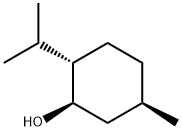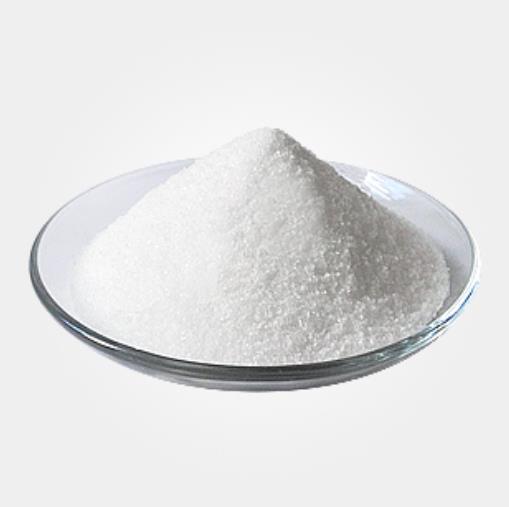L-Menthol – a new treatment for breathlessness?
General description
L-menthol is a white crystalline solid with a peppermint odor and taste. Levomenthol is a levo isomer of menthol, an organic compound made synthetically or obtained from peppermint or mint oils with flavoring and local anesthetic properties. When added to pharmaceuticals and foods, menthol functions as a fortifier for peppermint flavors. It also has a counterirritant effect on skin and mucous membranes, thereby producing a local analgesic or anesthetic effect. L-Menthol is a natural product found in Mentha arvensis with data available. L-Menthol is a cyclic monoterpene compound and an important perfume. Its isomers and properties . The main body of menthol molecule is cyclohexane, which has two conformations: boat conformation and chair conformation. The chair conformation is relatively stable, and the internal energy of chair conformation is lower than that of boat conformation (28.9 ~ 31.4 kJ / mol). When the three substituents of cyclohexane - methyl, hydroxyl and isopropyl - are in a relatively stable transverse bond, it is menthol, also known as n-menthol. The thermodynamic stability of n-menthol makes the content of menthol in the process of synthesizing menthol and isomeric stereotranslocation in the later stage in a better state. Menthol is also divided into l-menthol (l-menthol) and d-menthol (d-menthol). Among them, l-menthol has fresh and cool air and high commercial value. It is widely used in cosmetics, toothpaste, medicine, etc; The commercial value of d-menthol is low.
It is flammable, fully combusted and smokeless in combustion. It is colorless acicular or prismatic crystal or white crystalline powder; It has a special aroma of mint, which is cool after burning at the beginning; Ethanol solution shows neutral reaction. This product is easily soluble in ethanol, chloroform, ether, liquid paraffin or volatile oil, and slightly soluble in water.
Application and Pharmacology
Menthol and racemic menthol are used as flavoring agents for toothpaste, perfume, beverages and candy. It is used as an irritant in medicine. It acts on the skin or mucous membrane and has the effect of cooling and relieving itching; Oral administration can be used as a wind repellent for headache, nasopharynx and laryngitis. Its esters are used in spices and drugs. In the world, China and Brazil are the main natural mint production parks, and the annual output of mint oil reaches 2000-3000t.
1.Effectiveness of L-Menthol Spray Application on Lesions for the Endoscopic Clarification of Early Gastric Cancer:Although L-menthol spray application on lesions has been shown to be effective for the endoscopic clarification of early gastric cancer (EGC), the currently available data are all based on subjective evaluations. The research had objectively evaluate the effectiveness of L-menthol spray for the endoscopic classification of EGC[1].
2.L-Menthol for Gastrointestinal Endoscopy: A recent study introduced optical imaging to identify the margin of early gastric cancer by comparing the color changes before and after spraying L-menthol using light imaging to minimize bias, and found that the proportion of patients displaying color changes in stomach mucosa was significant[2,3].
3.L-Menthol – a new treatment for breathlessness:The effect ofL-menthol on the sensory-emotional dimensions of laboratory-induced breathlessness in patients with COPD has been described in a clinical trial. Further studies are warranted to investigate its application to inspiratory muscle training and its effects in combination with exercise training. L-Menthol olfactory stimulation has been reported to be effective in reducing breathlessness in healthy individuals, the elderly, and patients with COPD. It has been reported thatL-menthol enhances the perception of inspiratory flow and relieves breath-lessness without causing ventilatory depression. Further studies in patients with breathlessness, such as those with interstitial pneumonia, are warranted[2].
Synthesis
1.The first company to realize the industrial synthesis of l-menthol is takasa company of Japan, which takes laurene as raw material and obtains geranyl amine through amination. Geranyl amine is then rearranged through asymmetric hydrogen transfer in the presence of chiral ligand to obtain the intermediate chiral enamine. The product can be hydrolyzed to obtain chiral citronellal, which is then subjected to Lewis acid ring closing hydrogenation to obtain chiral l-menthol (Fig. 1). For this synthesis process, the key lies in the chiral isomerization of geranyl amine. It is reported for the first time that the ligand catalyzing the isomerization reaction is (s, s) - Diop, but the conversion and chiral selectivity of the chiral ligand can not meet the requirements of industrial production. Later, Gaosha company found that the rhodium complex of chiral binaphthyl ligand BINAP has good activity and stereoselectivity in catalyzing the chiral isomerization of geranyl amine, and more than 98% ee rearrangement products can be obtained under the catalysis of rhodium complex of BINAP. Another advantage of BINAP ligand is that when it forms [Rh ((s) - BINAP) 2] ClO4 catalyst with rhodium compound, its catalytic activity and chemical stability are high. Through industrial practice, it is concluded that the single ton value of the catalyst can reach 8000 and the cumulative ton value can reach more than 400000. Good stability and catalytic activity are the key to the successful industrial synthesis of menthol[4].
Figure 1 Synthesis process of menthol from takas a company of Japan
2. BASF company has two routes to synthesize l-menthol from citral. One is that citral is reduced to geraniol and Neroli alcohol, then citronellol is obtained by catalytic reduction with ruthenium and BINAP complex, and citronellol is oxidized to citronellal. For this route, the key is still the reduction of chirality. In the early stage of route development, rhodium is mainly combined with Diop, BINAP and chiraphos ligands to form catalysts, but the results are not very ideal, and the enantioselectivity is only about 50% ee. The stereoselectivity of the catalyst formed by ruthenium metal and ligand BINAP developed in the later stage has been greatly improved. For example, the reduction of geraniol with ruthenium acetate and BINAP can obtain about 98% ee chiral citronellol. In this route, citronellal needs to be separated, aldehyde reduction, carbon carbon double bond reduction and alcohol hydroxyl oxidation to obtain citronellal, which is a waste of resources. BASF has developed another route for the direct reduction of citronellal. This route takes the compound formed by rhodium and chiraphos ligand as the chiral catalytic system to catalyze the reduction of geranal. BASF researchers found that when the chiral catalyst contains carbonyl, its catalytic effect is better. Therefore, the key of this route is the content of CO in the system. First, synthesize the reaction intermediate under high CO pressure, and then reduce the CO pressure to make the intermediate remove a molecule of CO to obtain a chiral catalyst with catalytic activity. The chiral catalyst in this route can be reused under specific conditions, and the best comprehensive ton value reported can reach 100000. Although the catalyst has a high conversion number, the ligand is expensive and the production process conditions are demanding.
Figure 2 BASF citral synthesis of menthol is the core part of the process
Safety
First aid for poisoning due to the irritating effect of menthol on skin and eyes and certain toxicity, gloves and safety glasses must be worn when using in large quantities. Precautions: do not apply to eyes and mucous membrane. The lethal dose of subcutaneous injection in rats is about 2 / kg body weight. It is very dangerous to use nasal drops or ointment containing this product in the nasal cavity of young children, which will cause collapse.
1. Inhalation: transfer the poisoned person to a ventilated place and take general first-aid measures.
2. Mistakenly entering the eyes: wash the eyes according to the general steps. If necessary, please consult a doctor.
3. Skin contact: wash with water and soap.
References
1.Kikuchi H., Hikichi T. & Watanabe K. et al., "Effectiveness of L-Menthol Spray Application on Lesions for the Endoscopic Clarification of Early Gastric Cancer: Evaluation by the Color Difference," Digestion(2019), pp.1-9.
2.Kanezaki M., Terada K. & Ebihara S., "l-Menthol – a new treatment for breathlessness?" Current Opinion in Supportive & Palliative Care, Vol.15, No.4(2021), pp.233-238.
3.You Q., Li L. & Chen H. et al., "L-Menthol for Gastrointestinal Endoscopy: A Systematic Review and Meta-Analysis," Clinical and translational gastroenterology, Vol.11, No.10(2020), p.e252.
4.Zhang Rui: Study on the preparation of l-menthol: Hefei University of technology, 2021.
Related articles And Qustion
See also
Lastest Price from L-Menthol manufacturers

US $0.00/Kg/Drum2025-04-21
- CAS:
- 2216-51-5
- Min. Order:
- 1KG
- Purity:
- 99.9%; DL-Menthol Cas 89-78-1
- Supply Ability:
- 1000KGS

US $10.00/KG2025-04-21
- CAS:
- 2216-51-5
- Min. Order:
- 1KG
- Purity:
- 99%
- Supply Ability:
- 5tons



